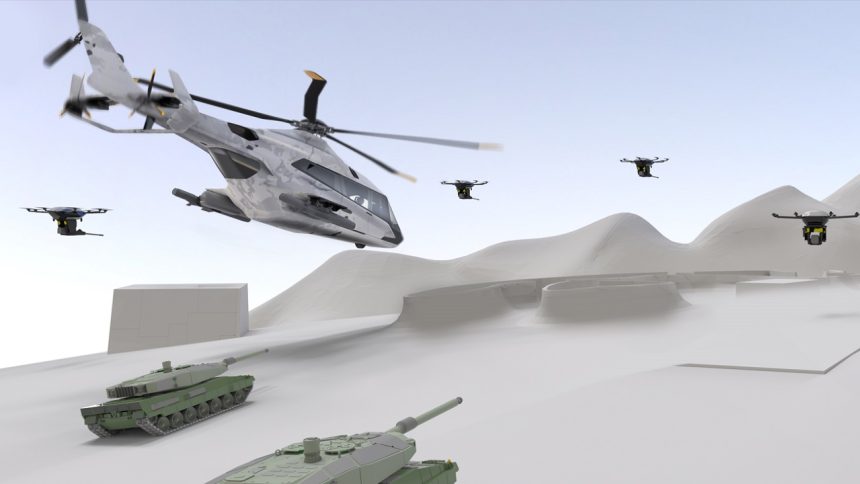The NATO Support and Procurement Agency contracted Airbus Helicopters, Sikorsky and Leonardo to identify and exploit cutting-edge technologies for the Next Generation Rotorcraft Capability program.
The NATO Support and Procurement Agency (NSPA) announced the award of three contracts to Airbus Helicopters, Lockheed Martin Sikorsky and Leonardo to perform detailed platform concept studies in the frame of the Next Generation Rotorcraft Capability (NGRC) program. The NGRC is meant to develop the concept for a new medium-multirole rotorcraft for multiple NATO Allies.
The NSPA says the contractors will identify and exploit cutting-edge technologies for potential integrated platform concepts which can meet the NGRC operational and supportability capabilities, as well as seeking innovation in digital design and development processes and advanced materials and manufacturing.
The study, dubbed “Concept Study #5”, focuses on high performance rotorcraft. The resulting concepts are expected to be modular and multi-mission, fully interoperable with NATO standards, with a high degree of connectivity and resilient communication system.
The goal is to ultimately replace the medium multi-role assets currently in service across NATO Allies, which will reach the end of their operational in the 2035-40 period. The NPSA is looking to satisfy this need in a timely and cost-effective manner, while concurrently leveraging a broad range of recent advances in technology, production methods, and operational concepts.
“The launch of Concept Study #5 is a significant milestone for the NGRC concept stage activities and demonstrates NSPA’s dedication to meet the challenge of next generation medium lift for Participating Nations,” said Ms Stacy A. Cummings, NSPA General Manager. “The strategy to launch 3 parallel contracts awarded by competition delivers on our commitment to maximise industry expertise, opportunity and engagement in the program, and will provide a broad range of potential concepts in the study results for our multinational customers.”
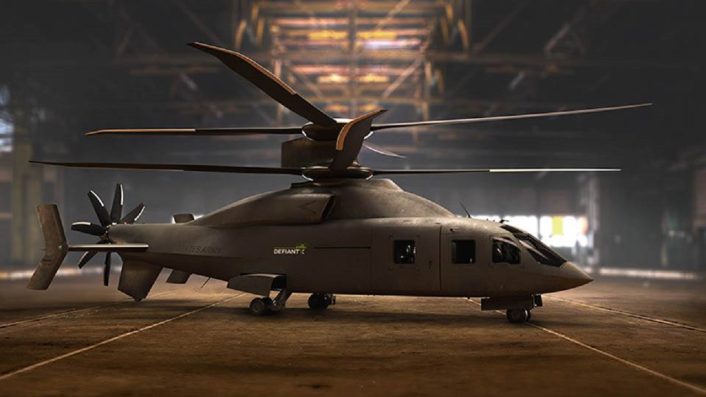
The industrial participation
As already mentioned, Airbus Helicopters, Lockheed Martin Sikorsky and Leonardo have been awarded contracts to begin the conceptual study effort. Although NATO did not disclose the economic value of the contracts, a previous request for proposals mentioned that each could be valued at €5.7 million.
France, Germany, the United Kingdom, the United States, Ireland and Italy are involved in the project via the different partner companies. Each partner, said NATO, will contribute to the study in its area of expertise: helicopter design, systems integration, connectivity, weapons and effectors, avionics and sensors.
Airbus said in a press release it will lead the concept study for NGRC. The company is partnering with RTX’s Collins Aerospace and Raytheon businesses and MBDA for the 13-month study which will analyze two different integrated concepts of next generation military rotorcraft.
“Taking part in this NATO study for the next generation of military rotorcraft offers a unique opportunity to leverage our experience working with the different European armed forces,” said Bruno Even, CEO of Airbus Helicopters. “Our goal, together with our highly skilled partners, is to develop a European solution, a concept that would fulfill both the needs of the NATO armed forces while also guaranteeing industrial sovereignty for our European nations and maintaining key engineering competencies.”
Airbus did not disclose details about the two concepts, however it previously mentioned that it could offer a derivative of the Rapid and Cost-Efficient Rotorcraft (RACER) demonstrator for NGRC. The demonstrator, currently being developed for the civilian European Research Clean Sky 2 project, is an innovative design with a main rotor and two pusher propellers instead of the tail rotor, capable to fly at a cruise speed of more than 220 kts (400 km/h).
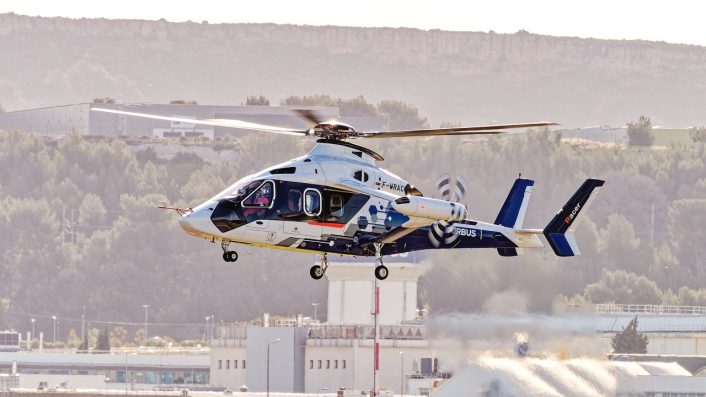
The other concept could be the one shown in the artwork released for the announcement of the study’s contract. This design, which shows similarities with the current H160 helicopter, is an “hybrid solution” with the classic main and tail rotors, in addition to two smaller pusher propellers on the tail.
“This project will be fully interoperable with other NATO means,” added Even. “With our experience in both civil and military helicopter design, we are convinced that we have the right cost effective, high performance, and operationally efficient solutions at Airbus Helicopters for the next generation of military rotorcraft.”
Sikorsky, which is now part of Lockheed Martin, selected a group of Tier-1 aerospace suppliers, which includes BAE Systems, ELT Group, ESG Elektroniksystem- und Logistik GmbH, GE Aerospace, Hellenic Aerospace Industry, Kongsberg, Liebherr-Aerospace Lindenberg GmbH, MAGroup, Malloy Aeronautics, SAFRAN, Rheinmetall and TERMA. The industry group will provide input as to how their military products can support Sikorsky’s integrated platform concept approach to advance NATO’s capabilities and provide a next generation rotorcraft solution.
“Building on the 40+ year legacy supporting frontline global missions, Lockheed Martin Sikorsky looks forward to continuing this trusted partnership with NATO” stated Mr Andy Adams, Vice President, Lockheed Martin Sikorsky Future Vertical Lift. “Extending Lockheed Martin Sikorsky’s technical expertise in developing advanced rotorcraft systems, we have assembled a group of leading companies from European Industry to support the execution of NGRC Study #5.”
It appears that Sikorsky will develop a concept based on its X2 demonstrator, the compound helicopter with coaxial main rotors and a pusher propeller in place of the tail rotor. This reflects the previous reports that the company could adapt the design of the Defiant X and Raider X, both developed from the X2 for the U.S. Army’s Future Vertical Lift, for the new NATO helicopter.
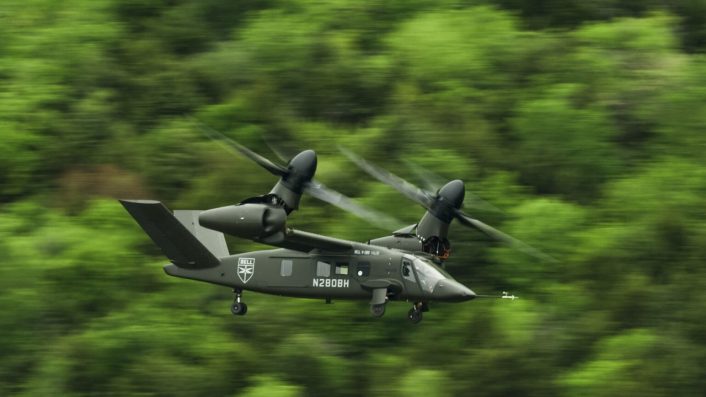
The demonstrator of the V-280 Valor developed for the FVL program. (Image credit: Bell)
“We are confident our game changing X2 rotorcraft will provide NATO with an integrated rotorcraft system that combines speed, range, maneuverability, survivability and operational flexibility, enabling commanders and aviators with multi-domain operations required to deter ever-evolving threats for decades to come,” added Adams. “Our X2 aircraft will bring to bear the strengths of Lockheed Martin along with input from our European Industry Group, such as digital thread, advanced manufacturing, sustainment, training, and weapon and mission system development, to provide NATO with an integrated rotorcraft system that combines speed, range, maneuverability, survivability and operational flexibility.”
Leonardo is collaborating with key leading industry players, which include Bell, General Electric, Hensoldt, Leonardo DRS, MBDA Italia, NLR, Rolls Royce and Safran. This reflects the Memorandum of Understanding that Leonardo and Bell signed as the former was expected to take the lead on a tiltrotor architecture proposal.
“The requirements set under the NGRC initiative imply capabilities that would best be delivered by a fast rotorcraft architecture, also including high speed and long range,” said Gian Piero Cutillo, Leonardo Helicopters Managing Director. “Our proposal will be developed around advanced tiltrotor concept studies, leveraging the solid and established experience of the Leonardo consortium team. The team is committed to delivering strong conceptual solutions to fulfil the operational requirements expressed by NATO. ”
With both companies having an extensive knowledge on tiltrotors, Leonardo with the AW609 and Bell with the V-22 and V-280, it is safe to say that they will develop a design which incorporates all of their latest technological solutions developed within their projects.
The NGRC and FVL
The NGRC program initiative was launched in 2022 and includes France, Germany, Greece, Italy, the Netherlands, United Kingdom and Canada, while the United States and Spain are currently acting as observers. NATO is seeking to develop a medium-class, multi-role rotorcraft aimed to replace medium multi-role helicopters currently in service, as a significant amount of them will reach the end of their life cycle in the 2035-40 period.
NSPA, through its dedicated NGRC Support Partnership, aims to respond to this upcoming requirement, in a timely and cost-effective manner, while concurrently leveraging a broad range of recent advances in technology, production methods, and operational concepts. The agency mentioned that NGRC is currently at the Concept Stage, intended to provide participating nations with some possible designs before tackling the development stage and the NGRC preliminary design review after 2025.
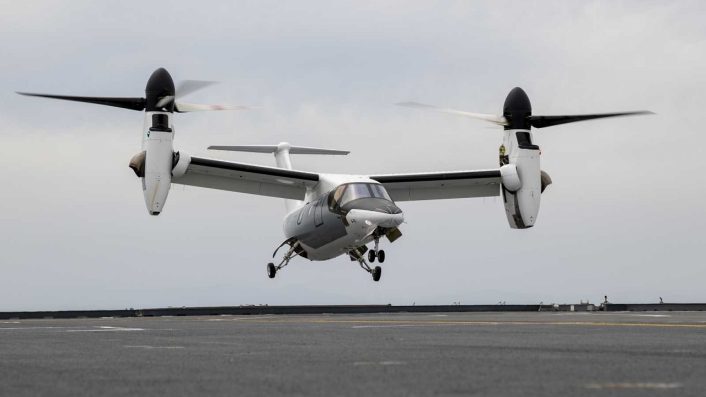
“The Next Generation Rotorcraft Capability High Visibility Project, is a multinational framework under which its participants can step-by-step decide to design, develop, and eventually acquire the next generation of medium multi-role rotorcraft capabilities,” mentions the NSPA on its website. “Allies, in cooperation with Industry, will explore how to match their needs with the latest technology on the market, looking at options such as hybrid and electric propulsion, a systematic open system architecture, and the delivery of radically improved flight characteristics.”
As for the importance of the vertical multi-role capabilities, the agency reminds that they play a crucial role in the force structure of NATO Allies because of their large degree of versatility. In fact, among the wide range of missions, we can find the insertion and extraction of Special Operation Forces; transport of small and medium sized cargo and troops into, out of, and within operational theaters; medical evacuation; search and rescue; and anti-submarine warfare.
Part of the medium helicopters’ flexibility is due to their size, which allows them to take-off and land in topographically restricted areas, such as forest glades or mountain ranges, adding to their operational flexibility. This also gives the opportunity to put forces anywhere and anytime to deter adversaries.
Having said that, it is possible that the NATO NGRC program will closely mirror the U.S. Army Future Vertical Lift and its Future Long-Range Assault Aircraft (FLRAA), also based on a medium-multirole helicopter that will replace the UH-60 Black Hawk. In late 2022, the service awarded the contract to Bell and its V-280 Valor tiltrotor at the end of the competition with Sikorsky.

The requirements of the next generation helicopter are not yet known, but they could be similar to the ones of FLRAA. The U.S. Army, in fact, wanted FLRAA to be designed around reach, survivable range ,speed and convergence of effects, with the capability of traveling roughly 2,440 nautical miles without refueling, in addition to being agile enough to safely maneuver troops into dangerous hot spots.
Bell’s officials previously told us that the Army doctrine established to counter current and future threats required new capabilities, which are speed, range and transformational capability. Operating further away and maintaining some distance from threats have been demonstrated in real world events to be among the most important capabilities right now.

